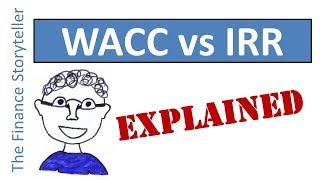When it comes to real estate investment, two terms you often hear are internal rate of return (IRR) and internal rate of return (IRR). But while they’re related, they’re also different. Their overall similarity is that they’re metrics used in real estate investment evaluations. Their main difference is that one is about the future cost of funds, while the other is an investment analysis technique. Here’s what you need to know about WACC versus IRR.
What is IRR?
Internal rate of return is a tool that investors use to, among other things, evaluate real estate over time and assess profitability. You can get a good idea of an investment’s risk by calculating what the property will likely be worth and what its value would be in today’s market, then matching those totals against the size of your investment.
In the end, figuring out the internal rate of return for each potential investment gives investors keen insight into how much a property will likely be worth in the future. How? By letting you know what it’s worth right now.
In Practical Terms How is IRR Used?
In addition to being a superior way to estimate an investment’s potential, the internal rate of return is also frequently utilized to examine capital projects and improvements, and how much such improvements will add to costs. In addition, the IRR can estimate future positive cash flows and factor in large expenses.
What is WACC?
In real estate, the weighted average cost of capital is how much, on average, debt and equity capital is used to finance a property investment. To figure that out, how much each capital source costs is weighted with its contribution, expressed in percentages, to the investment’s total acquisition cost.
In other words, the WACC is, on average, the net cost of an investor’s capital sources expressed as a percentage. Because it measures what an investor doles out for debt and equity financing, the lower the WACC, the better, since financing costs are minimized.
Understanding the WACC is important for anyone seeking to break into real estate investment, just as understanding capital calls, say, is essential for those who plan to invest in venture capital funds or private equity.
What’s the Connection Between IRR and WACC?
The link between the WACC and the IRR is the cost of equity capital, which is a required IRR. To cover the investment’s financing cost, the IRR must be larger than the WACC.
What’s the main difference, then, between the WACC and IRR? Whereas WACC represents the anticipated costs of funds from equity as well as debt sources, the IRR is used by investors to help them decide whether to take on a project or not.
The general rule of thumb is that the ideal project has an IRR that’s greater than or matches the investor’s capital costs, and that investors should likely pass on a project that has an IRR that’s less than the investor’s capital costs.
When considering WACC vs IRR, remember that however helpful the latter may be, it’s still an estimation of prospective returns that are based on assumptions. Too, when it comes to evaluating new projects, the WACC is somewhat limited in its application scope and is also based on a set of assumptions. Still, they’re effective for what they are and can significantly help with major decision making when it comes to real estate investments. If you’re interested in such investments and want to learn more, the alternative investment platform Yieldstreet has a host of resources available.

